The Robots of Death v. The Girl Who Died/The Woman Who Lived
This week the Randomiser brings me to a classic story first broadcast 46 years ago almost to the day of this post (29 January 1977), The Robots of Death, and the Twelfth Doctor 2-parter The Girl Who Died/The Woman Who Lived, from October 2015.

The Robots of Death

While the entire story is told from just a few rooms on a mining machine on a remote planet, Boucher manages to tell the story of an entire civilisation - its character and the basic principles of its structure - affluent, indolent and on the verge of collapse.

The sandminer’s crew is admirably diverse for 1977 DW. Actors such as David Collings, Russell Hunter, David Bailie and Brian Croucher all contribute to a fascinating interplay of nuanced characters. TROD is a brilliant whodunnit in space, a The Traitors ahead of its time.

In addition to the tight, stylish script and the sparky acting (Tom Baker and Louise Jameson are captivating leads of this sterling guest cast), designer Ken Sharp and costume designer Elizabeth Waller supply a unique and memorable art deco-inspired look for the whole story.
The eponymous robots are classics of DW design. As the human crew of the miner ramp up the self-inflicted paranoia within their own claustrophobic little group, the robots pad softly among them - some silent, some just gentle of tone. Sinister and unsettling.
As a youngster I remember thinking the robots were rather like Oompa Loompas from the 1971 film of Charlie and the Chocolate Factory. It was something to do with their swept-back hair and big eyebrows, I suppose, and their disquieting presence.

The Doctor describes Poul’s robophobia as a terror caused by the robots’ human appearance but the complete lack of non-verbal signals such as eye contact and facial expression. ‘It's rather like being surrounded by walking, talking, dead men.’

It’s a stroke of genius, and central to TROD’s brilliance. This chilling *absence* of humanity has worked so well for DW before (Daleks, Cybermen) and now the trick is played once more. We the viewers fear the robots, nothing can be trusted, it’s a perfect set-up for a whodunnit.

Ultimately the villain is revealed to be Dask, or Taren Capel - a chilling imitation of a robot, living among robots who chillingly imitate people. And his undoing is his voice, a part of the very humanity that he preaches as a weakness in others. It’s neat.

This is Leela’s second story, so an important strand of TROD is her eyes being opened to the wonders of the Whoniverse. The Doctor’s explanation of dimensional transcendentalism using boxes near and far away is memorable, although it’s hard not to think of Fathers Ted and Dougal.
It’s easy to sympathise with Leela; she makes jokes, and heroic choices, yet the Doctor patronises her. There’s no one else on the miner one would want to spend time with, other than poor robo-tec D84. Just the savage and the mechanical man; ‘civilisation’ is not painted kindly.

The Girl Who Died/The Woman Who Lived
While generally listed as standalone stories, The Girl Who Died and The Woman Who Lived really need to be watched together – certainly for TWWL to make sense. More so, watch them as important components in the Series 9 Doctor/Clara/Me 'hybrid' arc. They just work better that way.

The episodes share the same director, Ed Bazalgette, and principal guest star Maisie Williams, but have different writer credits: Jamie Mathieson and Steven Moffat for TGWD, and Catherine Tregenna for TWWL. So there’s a slightly different tone, but similarities also.
Superficially, both episodes are pseudo-historical comedies with a Pythonesque/Blackadderish feel, and ‘simple’ people terrorised by alien invaders from the skies. Going deeper, each tale links to DW past and future with flashbacks and foreshadows.
There’s a look back to the Twelve’s first story, Deep Breath, and even further, to Peter Capaldi’s appearance as Caecilius in The Fires of Pompeii, to suggest that the Doctor chose that face like a knotted hanky, to remind himself that he’s above the rules if he can save people.
‘And if anyone happens to be listening,’ the Doctor then shouts, ‘and you've got any kind of a problem with that, to hell with you!’ I think this is a deliberate look forward in the Doctor’s story, when he will face up to the Time Lords themselves in Series 9 climax, Hell Bent.
The Doctor seems incredibly unsure of himself in TGWD, full of self-doubt and recrimination over the rights and wrongs of breaking the laws of time. It’s a bit tiresome, to be honest, watching his Job-like bemoaning of being immortal and just so much cleverer than everyone else.

Twelve is antsy; he clearly has a lot on his mind, and can probably feel he’s on a dark path. He’s worried about losing Clara – and it’s true, she’ll be dead in three episodes’ time. Gallifrey is still locked away in its pocket universe. There’s a sense of a storm brewing.

‘Me’, played by Maisie Williams, has a great set up in TGWD; Ashildr is an intriguing character – a misfit in her small community, and ultimately its tragic saviour. That closing 360° sequence of eternal dusks and dawns is really striking.

But in TWWL, as highwayman/lady of the manor, Me isn’t particularly likeable, and it feels her USPs have been done before: immortality (through Captain Jack; the Doctor even has to acknowledge the similarity) and taking the long road through time (Jack again, and Auton Rory).

I enjoyed Rufus Hound’s guest turn as jobbing villain Sam Swift, a traditional style of DW rascally supporting character. I’m sure there are fan fictions out there in which Sam’s immortality chip continued to work and he’s still robbing purses and delivering terrible stand-up.

TGWD is the better looking of these two stories, with some beautiful fjordy scenery and chunky Mire battle suits. For me, TWWL’s greatest fault was the number of scenes set at night which made it hard to follow what was going on. That's a bugbear of mine; maybe it’s just my age!
Connections
What are the parallels, and the shared themes, between The Robots of Death and The Girl Who Died/The Woman Who Lived?
Yoyos feature in both TROD and TGWD. There isn’t a lot of looping or walking the dog going on, but Leela seems to have the knack, and Twelve attempts to convince his Viking captors that his yoyo is the Sign of Odin. They’re both yellow – is it meant to be the Doctor's same yoyo?
‘You said I had to keep it going up and down. I thought it was part of the magic,’ exclaims yoyo Leela.
‘To the primitive mind, advanced technology can seem like magic,’ Twelve mutters knowingly to Clara, before pulling out his own yoyo. Is he remembering that exchange from TROD?
TROD: ‘I never carry weapons. If people see you mean them no harm, they never hurt you.’
TGWD: The Doctor seeks alternative ways than with weapons for the villagers to fight the Mire.
This is an important constant for the Doctor, throughout DW. Well, nine times out of ten.
The ‘coincidence’ of the Doctor always managing to turn up in the most improbable times and places is addressed in both TROD and TGWL. I enjoyed Four’s ‘Oh sorry, I thought it was a rhetorical question. Yes, it's just a coincidence,’ to a spluttering Uvanov.
My personal theory is that it’s not coincidental at all, by the way. I think the TARDIS knows exactly when and where the Doctor needs to be at the start of each new adventure (even when it has a Randomiser fitted!).
Leela has a premonition of danger just before the sandminer is sabotaged. Four dismisses her instinct as imagination.
Twelve is more open-minded in TGWD: ‘People talk about premonition as if it's something strange. It's not. It's just remembering in the wrong direction.’
Ashildr herself believes she has failed, in bringing the Mire back to the village. She thinks her whole life to this point has been one of failure; and then she dies – of heart failure.
But … ‘Failure’s one of the basic freedoms,’ Four tells a despondent D84.
Indeed, in removing Ashildr’s ability to fail (through eternal life), he takes away her freedom. ‘I trudge through the centuries, day by day, hour by hour.’ Such is the curse of those who lose the essence of their humanity. Taren Capel, take note.



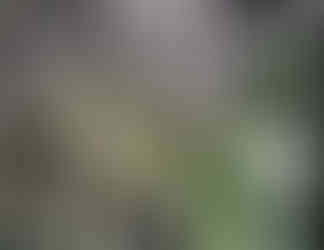











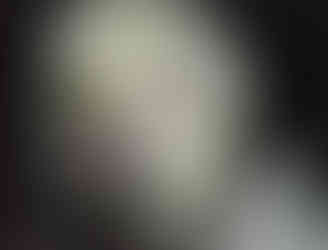



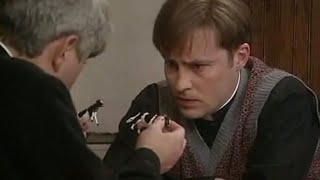



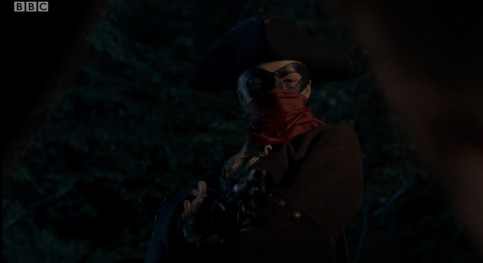










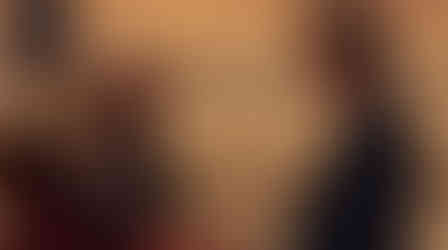





























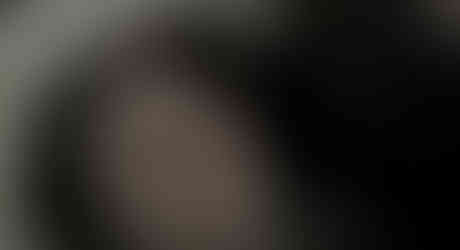



Commenti